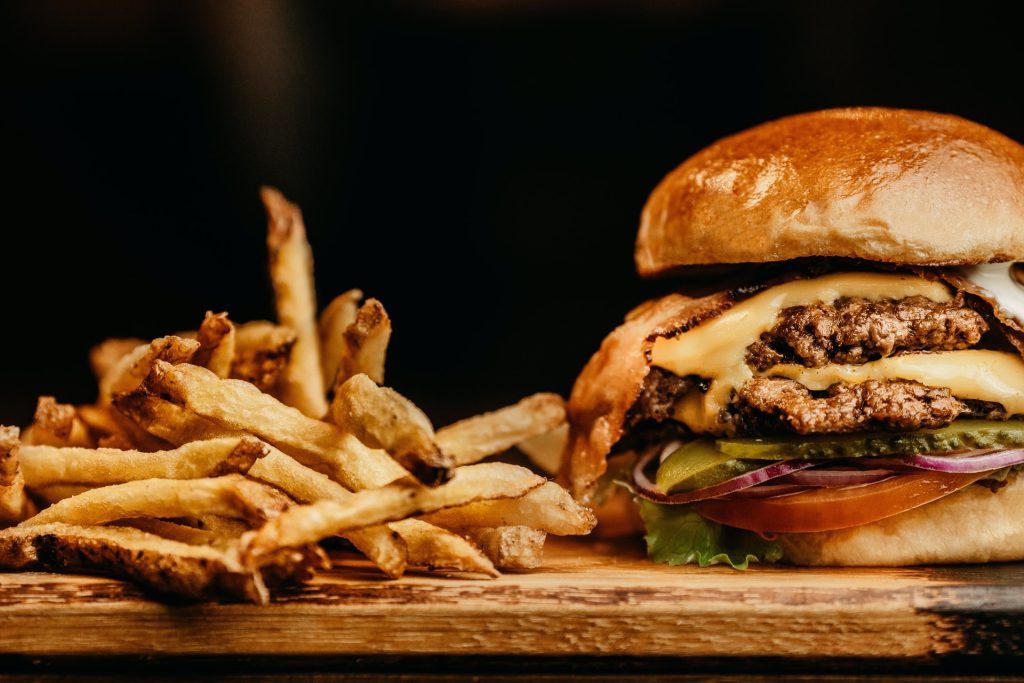What Students Eat: I Conducted a Survey at a South African University’s Cafes – the Results Are Scary

Tinashe P. Kanosvamhira, University of Cape Town
University students have limited spending money and their schedules are packed. Many are adapting to new lifestyles on campus. Eating a healthy diet is crucial: a poor diet leads to reduced concentration, lower grades and increased stress.
Campus cafés, especially at universities that are some distance from supermarkets, often sell mainly fast food such as white bread sandwiches, hot chips and doughnuts. It’s easy to eat on the go, but places nutritious choices out of reach.
I’m an urban geographer who researches the relationship between food, health and place. My work examines how urban agriculture, informal food systems and everyday urban infrastructures shape well-being, sustainability and spatial justice in African cities.
Research has already found that through pricing, menu design and information provision, campus cafés play a decisive role in shaping dietary behaviours among young adults. I wanted to find out how students at the University of the Western Cape in South Africa choose what to eat when they’re on campus, what they see as healthy food and what stands in the way of them buying nutritious meals.
The university is one that was underfunded during apartheid. Until 1994 it primarily taught students who were Black and people of Colour. Today, it serves about 23 000 students, many of whom are drawn from low-income backgrounds, and has few supermarkets within walking distance. The campus cafés are a key food supply area for students.
My research found that at the University of the Western Cape, only 32% of the food offered at the student café was healthy. It also cost more than the fast food. The students I surveyed knew healthy food was important. But only a small minority consistently chose nutritious meals. Nearly 40% of the group reported that the healthy options were too expensive.
When students face the twin challenges of financial hardship and inadequate access to affordable, nutritious food, this deepens inequality. It also undermines their efforts to succeed. Even worse, it can cause students to develop long term, unhealthy eating habits that damage their health.
Unless affordability, availability and awareness of healthy food choices are addressed together, students will struggle to eat well and to perform at their best.
Universities must implement targeted food subsidies, introduce clearer nutritional labelling, and expand healthy menu options to make nutritious eating more accessible and appealing to students.
Students speak out about their food choices
I conducted a survey that sampled 112 students in five campus cafés at the university. These cafés are mainly used by students in the 18-24 age group.
My survey revealed that 75.9% of students considered healthy offerings at least “somewhat important” when choosing where to eat. Yet only 6.3% always selected nutritious options; 28.6% rarely or never did so. Meanwhile, 38.4% of students described nutritious meals as “expensive” and another 8% found the healthy options “very expensive”.
My research also found that University of the Western Cape students ate very little fruit and vegetables. Just 41% of the students I surveyed ate two or more servings a day and 9.8% admitted they ate none.
I also did a detailed menu audit at one café to see what was on the menu. I found that only 32.6% of 46 distinct items met basic “healthy” criteria (they were low in saturated fats and made up of whole-grains or vegetables).
The majority of students (55.4%) had not noticed any campus healthy-eating campaigns, but agreed (57.1%) that balanced meals boosted academic performance and overall well-being:
I feel much more focused and energetic when I eat well, which helps me do better in my studies and feel healthier overall.
Only a small handful of the students said they could afford healthy campus café meals:
I choose cafés based on food quality. If the food is fresh and tasty, I’ll pay more, but it needs to be worth it.
What needs to happen next
High prices for nutritious items, narrow menu selections and barely visible information about nutrition are preventing students from eating healthy foods on campus.
Campus café offerings tend to mirror the broader inequities of national and global food systems. Food environments of big institutions like universities can prop up food inequality, even if these universities are committed to social justice.
Universities should adopt these steps to make healthy food available to students:
- Subsidised meal plans and discounts: Introducing a tiered subsidy for students from low-income backgrounds would directly reduce costs. For example, meal vouchers could make salads, whole-grain sandwiches and fruit bowls as affordable as a pastry or soft drink.
- A wider range of food on the menu and smaller portions: Partnerships between university caterers and local cooperatives or farmers could expand the range of fresh produce. Smaller portions or “light” meal options could be sold at lower prices to suit tighter budgets. Regularly rotating healthy specials and clearly labelling ingredients and calories would help students become accustomed to choosing healthy meals.
- Visible nutrition campaigns: Digital and printed standout posters about healthy foods could be placed around campus. Universities could hold social-media challenges and pop-up tasting events. Integrating simple tips into lecture slides or student newsletters would also help by repeatedly exposing students to healthy food tips.
- Peer-led workshops and cooking classes: These should be arranged to empower students to take ownership of their diets and learn about budgeting, meal planning and quick, nutritious cooking skills. Peer facilitators can demystify healthy eating and create a supportive healthy eating community.
- Seeking feedback: To see if their healthy food campaigns are working, universities should survey students, and analyse sales data from the cafés to see what’s being eaten. They should get feedback from students through focus groups that identify emerging needs and ensure that campaigns and projects reflect the realities of students’ lives.
My research suggests that by tackling cost, choice and communication together, universities can transform their cafés from sites of compromise into engines of student well-being. Such interventions would unlock academic potential and set young people on healthier life paths. This is an outcome as enriching as any degree.
Tinashe P. Kanosvamhira, Postdoctoral fellow, University of Cape Town
This article is republished from The Conversation under a Creative Commons license. Read the original article.



